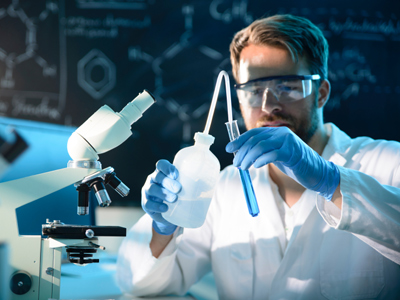Analyzing substances forms a major part of Chemistry in high school. This quiz is all about quantitative analysis. This kind of analysis allows us to identify the amounts of different elements present in compounds.
Analyzing substances quantitatively answers the question of 'how much'. It involves carrying out experiments that give you results for use in calculations. The calculations indicate the amouts of each element present in a compound and can be given as a percentage or as a mass. These calculations often involve the use of a quantity called the mole. Many students are put off by this as it is not something that they have come across before high school. It should not be worrying - it is just like using more familiar terms like 'thousand', 'million', 'billion' and so on. It is just a word that is used to represent a large number of particles and it really makes life much easier when carrying out chemical calculations.
A mole represents 6.03 x 1023 paricles of a substance, but it doesn't matter if you can't remember that!. The number is so large because atoms and molecules are so tiny.
The main calculations in quantitative analysis depend on your ability to work out the relative formula mass of any given substance. Most of the time you will be given the correct formula but the highest level candidates will show that they can work out the correct formula for a compound from any data given.
The mole simplifies chemical calculations by telling you the proportions of each substance that are involved in a chemical reaction. Look at the following chemical equation:
2H2 + O2 → 2H2O
The numbers in front of each of the formulae indicate the number of moles required. No number in front indicates 1 mole. So in the above reaction, 2 moles of hydrogen molecules react with 1 mole of oxygen molecules to form 2 moles of water molecules - a ratio of 2:1:2.
To work out quantities you only need to know how many moles of ONE of the substances you have to work out the quantities of the rest. If 4 moles of water were produced in the reaction above, you would need 4 moles of hydrogen molecules and 2 of oxygen. If only 0.5 moles of water were produced, you would need 0.5 moles of hydrogen molecules and 0.25 moles of oxygen.
If you need to work out the number of moles for yourself, you use the equation moles = mass/relative formula mass. You will need to rearrange this as required by the questions that you have to answer.
Have a go at this quiz on analyzing substances and see how much you understand about quantitative analysis.








